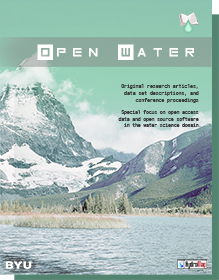Article Title
Connecting Space to Village by Predicting Algae Contamination in Lake Atitlán, Guatemala
Keywords
NASA SERVIR, GEOGloWS, ECMWF, HMaaS, Lake Atitlán
Abstract
Environmental authorities in Guatemala have become increasingly concerned in the last decade due to the deteriorating condition of the Lake Atitlán watershed. The lake has experienced algae blooms that first appeared in 2009 and now occur almost yearly. The National Aeronautics and Space Administration’s (NASA) SERVIR Science Coordination Team and scientists at the University of Alabama in Huntsville (UAH) have been working on an algorithm that predicts algae blooms using satellite data, artificial intelligence, and machine learning. However, to make the algorithm work consistently, they were lacking data for one important variable: daily volume of runoff into the lake. Using the Global Streamflow Prediction Service (GSPS) produced by the Group on Earth Observations (GEO) Global Water Sustainability (GEOGloWS) and the European Center for Medium-Range Weather Forecasts (ECMWF), a python script was developed that provides daily forecasted volumes of water flowing into Lake Atitlán. The availability of this global hydrologic model, accessible for individual rivers through a web service, allowed SERVIR to fulfill their mission to “Connect Space to Village” by providing access to knowledge that will help better understand and protect the Lake Atitlán watershed.
BYU ScholarsArchive Citation
Meyer, Alma; Sánchez Lozano, Jorge Luis; Nelson, Jim; and Flores, Africa
(2021)
"Connecting Space to Village by Predicting Algae Contamination in Lake Atitlán, Guatemala,"
Open Water Journal: Vol. 7:
Iss.
1, Article 8.
Available at:
https://scholarsarchive.byu.edu/openwater/vol7/iss1/8
